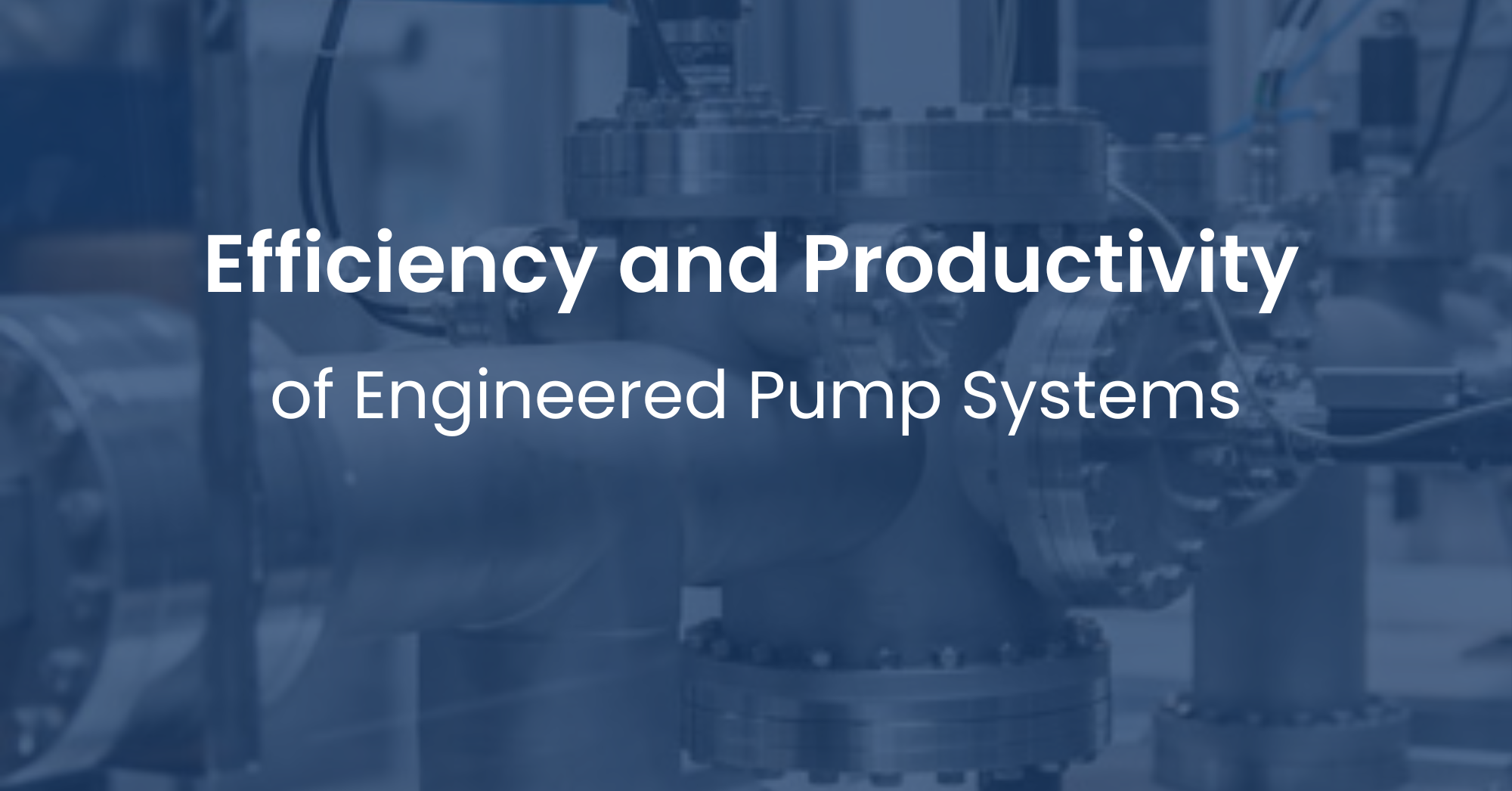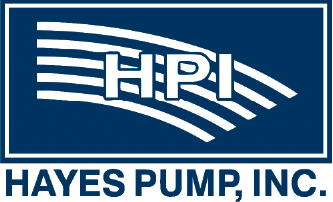Home » Blog » The Efficiency and Productivity of Engineered Pump Systems
The Efficiency and Productivity of Engineered Pump Systems

Various engineered pump systems are utilized across industries, differing in type and size based on the specific use. These systems play a vital role in industrial processes, plumbing, and HVAC applications, serving purposes like cooling, chemical feeds, and fuel oil. Customized pumping systems enhance numerous processing applications, from boosting pressure in plumbing systems to supporting water treatment plants and HVAC functions. Energy-efficient designs are crucial today, aiming to cut costs and improve productivity for facilities. Efficiency hinges on every component of a pumping system working harmoniously to transport fluids effectively. Streamlining these components enhances productivity for facilities relying on engineered pump systems.
Importance of Efficiency & Productivity in Engineered Pump Systems
Engineered pump systems are critical to the operation of many facilities. They’re the workhorses for many industrial applications, supporting production in power generation and petrochemical processing industries. These types of pumping systems often run longer than other facility equipment, with the energy they consume adding a significant amount to operating costs annually. It’s estimated that engineered pump systems operate for about 27 percent of all industrial energy used by motorized equipment in manufacturing plants. Because of how much energy they use, engineered pump systems often are targeted to reduce operational energy usage within a facility.
To improve pump system performance, facilities should take the following measures:
- Ascertain conditions and constraints for operations
- Establish current and assess future needs for processing
- Collect and evaluate operational data to determine load duty cycles
- Evaluate other system designs to determine how efficiency and productivity could improve
- Look for the best options from both economic and technical perspectives
- Consider the system holistically when evaluating subsystems
- Employ the best solutions as per previous analyses
- Gauge energy use in connection with operations
- Continually monitor and maintain the system to optimize performance
Finding opportunities to improve efficiency and productivity should include the overall system and how various subsystems within an engineered pump system interact. For example, a pumping system operating efficiently may generate greater flow than the process requires, so considering how well the system serves the application will help assess operational efficiency. In such a case, throttle valves may improve operational efficiency by limiting the flow. When considering improving efficiency best, it’s important to establish which components will most effectively match the processing load on an engineered pump system.
Components of Engineered Pump Systems
When considering the efficiency of engineered pump systems, the system must be considered holistically. A systematic approach will help optimize the system rather than just dealing with its specific components. That doesn’t mean neglecting these components but understanding how they contribute to the pumping system. This allows facilities to analyze how individual components work together to affect system performance.
Elements of engineered pump systems will normally include:
- Air separators
- Control system
- Expansion tanks
- Filters
- Fuse outlets
- Interconnected piping
- Motors
- Pumps
- Strainers
- Valves
Modern engineered pumping systems may also include digital interfaces, Internet connectivity, monitoring software with sensors, and other elements that help to enhance the performance of engineered pump systems. While pump operators are often focused more on the day-to-day demands of the system, it’s important to look beyond this. For example, maintenance crews should understand that when the system requires frequent replacement of components like bearings and seals, it may indicate a more extensive issue.
Designing Efficient Engineered Pump Systems
Engineered pump systems are designed to support production systems, with their capabilities based on the system's engineering. For instance, municipal water treatment pump systems must determine the water quantity and pressure needed for efficient transport. Optimal cooling system design requires understanding heat transfer to decide on heat exchanger number and size. Pumps should match expected flowrates and pressure.
Engineered pump systems typically operate below their best efficiency point (BEP) range of 65 to 85 percent. Operating below BEP leads to excess energy converted to heat, noise, and vibrations, raising energy and maintenance costs. Poorly engineered pump systems drain operational and maintenance budgets due to increased energy use and repair needs, impacting a facility's overall expenses.
Effects of Inefficiency in Engineered Pump Systems
To operate most efficiently, pumping systems must do so at or near their BEP. This means the pumps should only flow at a rate of 10 to 15 percent beyond the BEP. Operating at a capacity in excess of this will often result in excess energy that causes pumps to surge and vibrate. This, in turn, can result in problems with bearings and shaft seals, while cavitation is also a possibility that can damage pump components.
When operating at a lower capacity than the BEP this may result in eddy currents caused by fixed-vane angles, which can occur between the wear rings, within the casing, and in the impeller. This can lead to centrifugal momentum on the rotor that elevates stress on the shaft and amplifies shaft deflection, resulting in possible problems with bearings and mechanical seals. The axial movement of the shaft and radial vibration will also intensify, potentially causing premature wear.
Improving Efficiency & Productivity in Engineered Pump Systems
This will require assembling a team to assess how designs can be best reengineered. In this respect, the optimization of pump systems is very much like the design and development of other systems. It takes people knowledgeable about pump systems and processes to meet the system's overall goals.
The following steps give production facilities basic steps to optimize their pump systems:
Prescreening: An initial assessment should identify areas with the most savings potential. If a pumping system presents at least one of these symptoms, conducting a deeper evaluation is best. Critical parts of the system should be the highest priority. Engineered pumping systems should be assessed for the following:- Changes in a pump system’s functions that occur without any alterations.
- Presence of noise within the system suggests potential cavitation.
- Absence of tools to gauge pressure, power, or flow within the pump system.
- Presence of flow regulation in the bypass line that recirculates fluids.
- Processes that involve continual running of at least one pump for batches.
- Pump system continuously running in parallel with an identical number of pumps.
- Recurrent cycling that turns the pump on and off.
- Valves that control flow with elevated throttle.
- Level 1: An assessment that provides a qualitative appraisal of areas of the pump system that may offer energy savings or other enhancements.
- Level 2: An assessment done during normal operating conditions that determines quantitatively what corrections can be made to improve reliability and reduce energy consumption.
- Level 3: An assessment that uses monitoring and tracking the system’s operations over longer periods of time to ascertain conditions quantitatively.
Data collection: Data should be collected on the pump system and the facility’s energy costs to uncover inefficiencies by comparing actual conditions with ideal ones. For instance, pump data can match flowrates and head requirements with real readings, indicating if a pump is appropriately sized. The data can also be graphed for easy performance evaluation to determine maintenance needs or system upgrades. Visuals help identify if the pump operates efficiently within its BEP range. Additionally, gathered data can evaluate bypass lines, piping setups, valves, and other components.
Cost estimates: Optimization efforts can move forward once properly evaluated to determine how changes will improve operational efficiency and productivity. This requires a further analysis to justify the costs of optimizing the system. This analysis should also compare costs of alternative systems regarding energy use and maintenance to look at how changes to the current system may affect the overall productivity of a facility. These should include the costs of the following:
- initial acquisition
- installation and commissioning
- energy
- operational costs
- repair and maintenance
- downtime
- environmental-related
- decommissioning and disposal
- augment reliability
- decrease production expenses
- enhance workplace safety
- expand productivity
- improve quality
- upgrade operational capacity
Engineered Pump Systems from Hayes Pump
Hayes Pump distributes various engineered pump systems from Canariis, Grundfos, and Xylem for industrial processing and other applications. Our company can also build custom pump systems, for which our engineers can assist with design and engineering, along with specifications and purchasing components. Whether using a manufacturer-built or customized system, we can also help with installation, maintenance plans, training, and other aspects of pump operation.
The expert staff at Hayes Pump can assist with the following:
- Seal water systems
- Mobile pump arrangements
- Fuel oil sets
- Complete custom-packaged skids
- Chemical feeding systems
- Booster systems
To learn more about our engineered pump systems, contact the experts at Hayes Pump.




